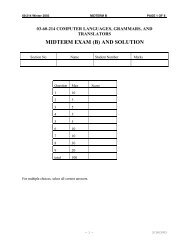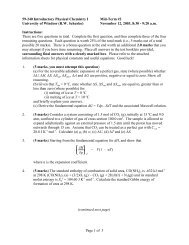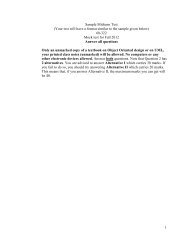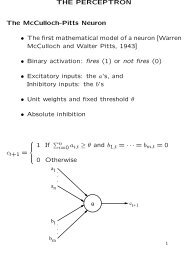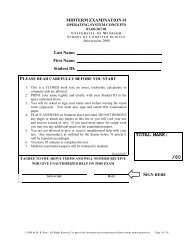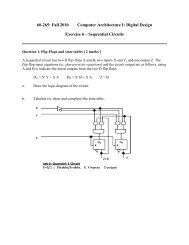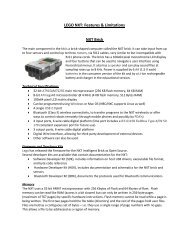Adjectives: A Uniform Semantic Approach - University of Windsor
Adjectives: A Uniform Semantic Approach - University of Windsor
Adjectives: A Uniform Semantic Approach - University of Windsor
You also want an ePaper? Increase the reach of your titles
YUMPU automatically turns print PDFs into web optimized ePapers that Google loves.
<strong>Adjectives</strong>: A <strong>Uniform</strong> <strong>Semantic</strong> <strong>Approach</strong> 337<br />
Jane is an [attractive [blond woman]] (8)<br />
And, the set-theoretic representation <strong>of</strong> the adjectival phrase might look something like:<br />
Attractive ∩ (Blond ∩Woman) (9)<br />
However, this representation does not capture the intended meaning. That is,<br />
attractive in (8) modifies the expression blond woman as a whole. In other words, for<br />
someone who utters (8), blond is essential to the extent that if the denotation <strong>of</strong> Jane<br />
were not blond, the utterance (8) might not have taken place.<br />
3.3.2 A Solution<br />
In order to accommodate adjective phrases, we need to do two things. First, expand<br />
our ontology to include properties—assuming that adjectives denote properties. This<br />
will enable us to form new property types from the more basic ones. Second, we need<br />
a rigorous typing system, whereby every set has a type. The typing system we are<br />
proposing shortly will enable us to generate new types from the basic ones.<br />
The type system must correspond to the grammar’s production rules. Grammar<br />
rules for adjective phrases might look like the following:<br />
AP ::= AN<br />
N::= AN | man |woman |man |dancer| surgeon|…<br />
A::= good | red |attractive| fragrant|…<br />
The rules in (10) will recursively generate adjective phrases such as good man,<br />
fragrant red roses, etc. The grammar in (10) generates noun phrases by means <strong>of</strong> a<br />
string concatenation function. A typing system should parallel the grammar and be<br />
able to recursively define new types from existing ones. Such a system is inductively<br />
defined as follows:<br />
a) The basic types are the nodes <strong>of</strong> the taxonomy <strong>of</strong> Figure 1, e.g.<br />
Nat(ural) Kind, Kind, Properties, Role, Implement, and ┬.<br />
b) If a is a property type and b is a basic type, then a: b is a type, see the<br />
example regarding the wide-scope reading.<br />
c) If a and b are property types then a-b is a property type, see the<br />
example regarding the narrow-scope reading.<br />
d) If a is a type and b is a non-property type, then a: b is a type.<br />
e) Nothing else is a type.<br />
(11-a) states the basic types assumed. In a full-fledged system, the set <strong>of</strong><br />
admissible basic types must be larger than this. However, this set suffices to<br />
demonstrate our approach.<br />
(11-b) states that the first basic type <strong>of</strong> a resulting set is a property type. This is<br />
because here we are only treating adjective-noun—not noun-noun—combinations, for<br />
example. (11-c) generates property types. This is necessary for dealing with narrowscope<br />
readings, i.e. when an adjective modifies another adjective and both modify a<br />
noun or an adjective phrase. Both (11-b) and (11-d) ensure that the resulting type is<br />
that <strong>of</strong> the head noun.<br />
(10)<br />
(11)







